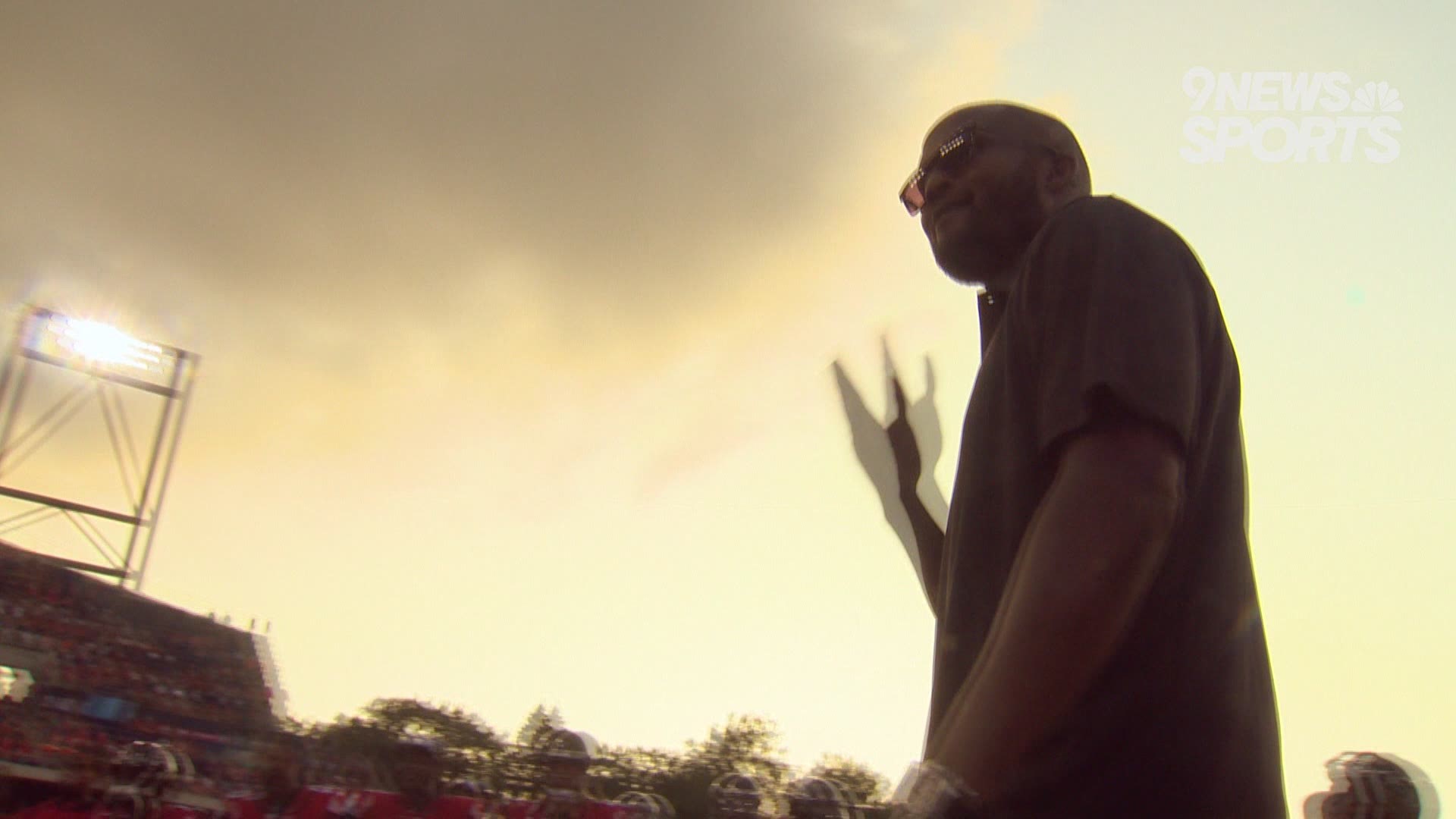CANTON, Ohio — A steady procession of Broncos players shuffled somberly past their popular teammate Darrent Williams, who was lying in repose.
It was Jan. 6, 2007 at a Baptist church in Fort Worth, Texas. Incomprehensibly, Williams had been killed in a downtown Denver drive-by shooting five days earlier. He had just finished his second season with the Broncos as a cornerback playing opposite of Champ Bailey.
Bailey was the team’s best player who was coming off, looking back, the best two seasons of his career. As he moved into the church single-file with his teammates, Bailey noticed the casket was open. He paused, rubbed his neck in a state of discomfort, and fell out of line. He waited a minute or two on the side, and then a took a seat a few rows back.
Bailey is as cool and poised as they come, but there is a quiet sensitivity to his soul. To Bailey, the murder of his friend and teammate – who was just 24 years old – was the toughest moment of what can now be called a Hall of Fame career.
"Yeah. It was the toughest because … (Williams) was Chris Harris," Bailey said, referring to his last cornerback partner with the Broncos from 2011-13. "He was walking that same path. Young, hungry, talented. That’s why when Chris came in, I was telling him, ‘You remind me so much of Darrent. D-Will is just like this.’ And he knew all about D-Will. It just made me want (Harris) to succeed more."
After his thoughtful response, Bailey sat back, let out an audible sigh, and carried on with his Hall of Fame press conference Friday.
Bailey got his Gold Jacket Friday night, then moved on to serve as the co-featured guest of the Hall of Fame party, along with the family of Broncos’ owner Pat Bowlen. He will receive his bronze bust – the symbol of football immortality – Saturday night during the Hall of Fame Class of 2019 enshrinement ceremony.
Bailey will be the seventh of the eight inductees to deliver his speech. He earned 12 Pro Bowl berths during his 15-year career so there was no single moment that made him a Hall of Famer.
But his back-to-back seasons of 2005-06 put him over the top. He combined for 19 interceptions, 301 return yards and call it 4 touchdowns (let’s give him that last yard on his end-to-end interception return against Tom Brady in the playoffs) in those two seasons.
Although Bailey was known as a preeminent man-to-man corner, it was an injury, and a new strategy by Broncos’ secondary coach Bob Slowik, that led to those two iconic seasons.
Slowik had Bailey play off the line those two years. By playing off, Bailey could read the quarterback – and pounce on the thrown ball. It’s difficult to pick off an interception while playing man-to-man because a cornerback often winds up running his back to the quarterback.
"I always felt like I was a better press corner," Bailey said Friday. "Fortunately for me, I really started doing that (playing off) because of my hamstring. Because when you’re playing bump-and-run you’re always full speed. Because that guy can run past you at any second.
"But if I’m off, I can slow play everything. So the hamstring kind of enabled that. I just utilized it a lot more because I thought, playing off, I’m actually pretty good at this.
"Slowik’s way of thinking was, you read the quarterback. That was the first time a coach told me to read a quarterback. So I took it to heart and I tried to use that even down the line a little bit."
Since Bailey’s 10 interception season in 2006, there’s only been one other double-digit pick season – the next year, in 2007, by Antonio Cromartie, who otherwise never had more than 4 picks in a season.
No cornerback has since come close to Bailey’s two-year production of 19 interceptions in 2005-06.
"I think rule changes," Bailey said when asked to explain why the 10-interception season has become obsolete. "I think the new rules really put a lot of pressure on the defense.
"And now one thing I noticed with my last two coordinators (Dennis Allen and Jack Del Rio), they were trying to be more conservative and just make sure -- don’t give up the big ball. So, I think guys are not taking as many chances as they used to."
It wasn’t just interceptions that made Bailey a Hall of Famer. Unlike two other premier cover corners that sandwiched his career – Deion Sanders and Darrelle Revis – Bailey was a strong tackler. Which brings up another injury that didn’t stop Bailey from having his tremendous season in 2005.
In the opener in Miami that year, Bailey separated his shoulder early in the second half. He played the rest of the season in a shoulder harness.
First game with his new constraint, he picked off San Diego quarterback Drew Brees in the end zone early in the second half – a play that wound up becoming the turning point in the Broncos’ 13-3 season.
"Even that played a role in it," Bailey said of his harness. "It was tough. It was challenging. It was my left shoulder so my right one now feels worse than my left."
With the left shoulder protected, the right shoulder was alone in its physical punishment.
"I had to tackle with something," Bailey said. "Fortunately with me, I was able to use my right shoulder and be effective with it."
He practiced that same week. Champ laughed at the memory.
"I thought I was a tough guy," he said with his patented Hall of Fame chuckle.
SUGGESTED VIDEOS | Sports

